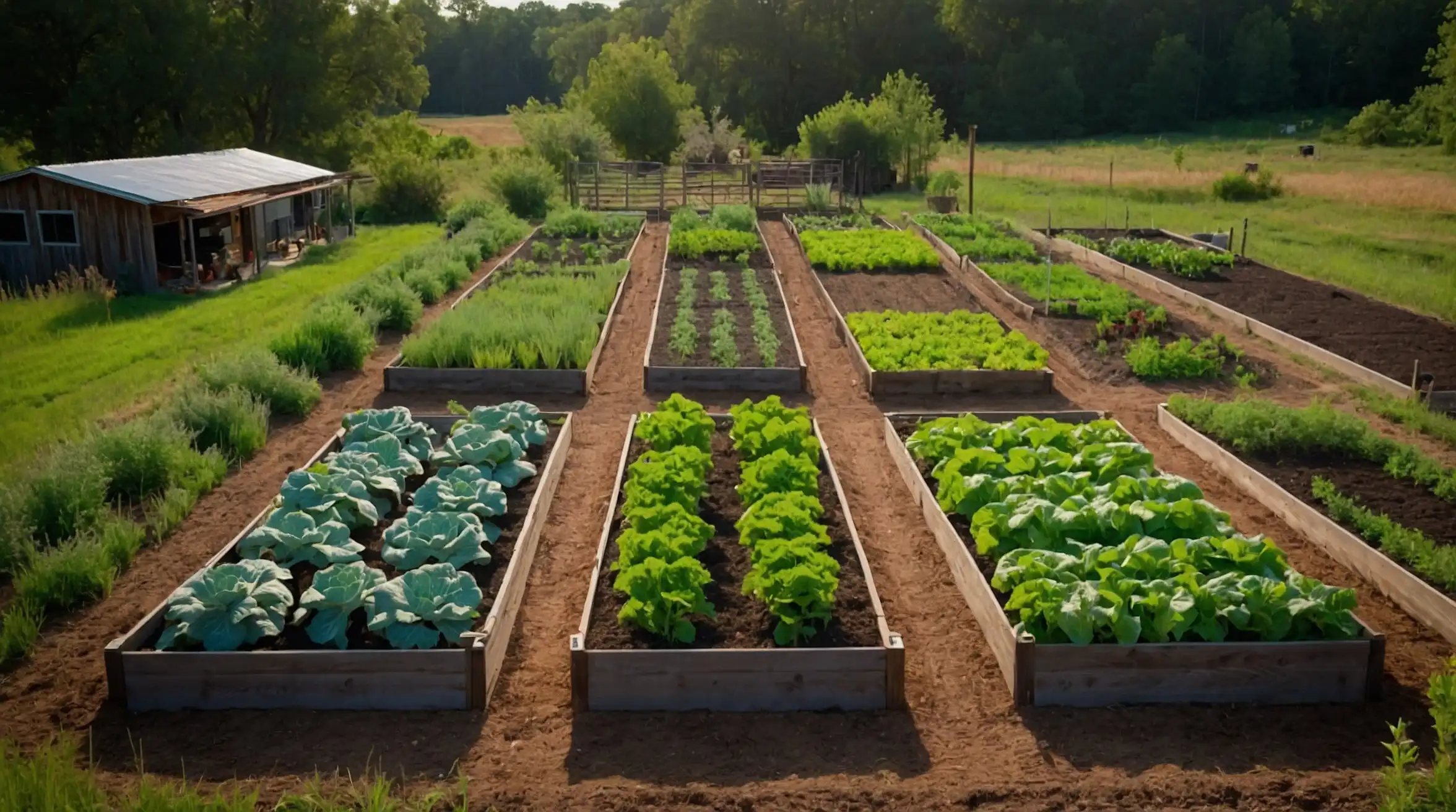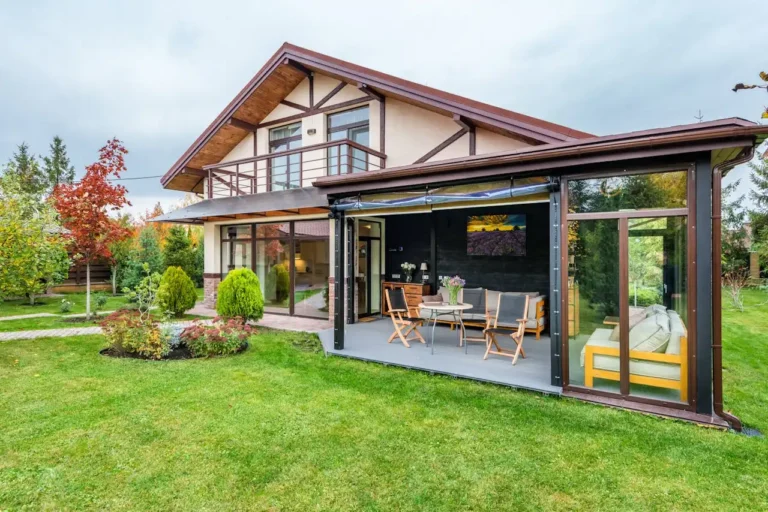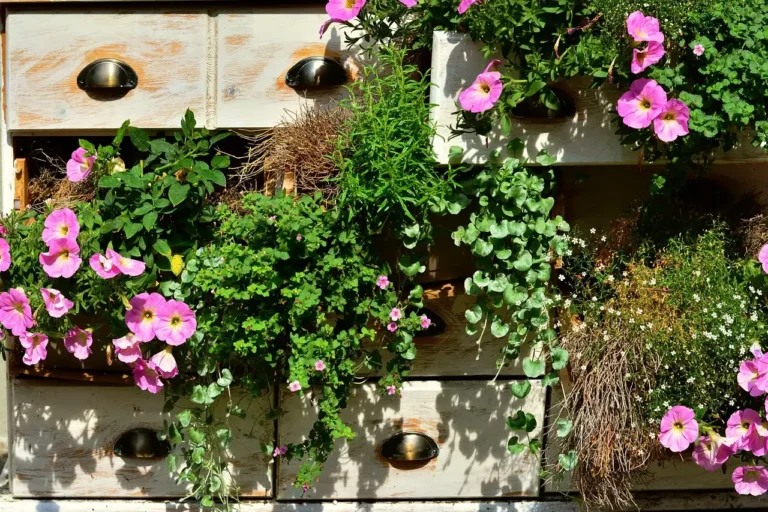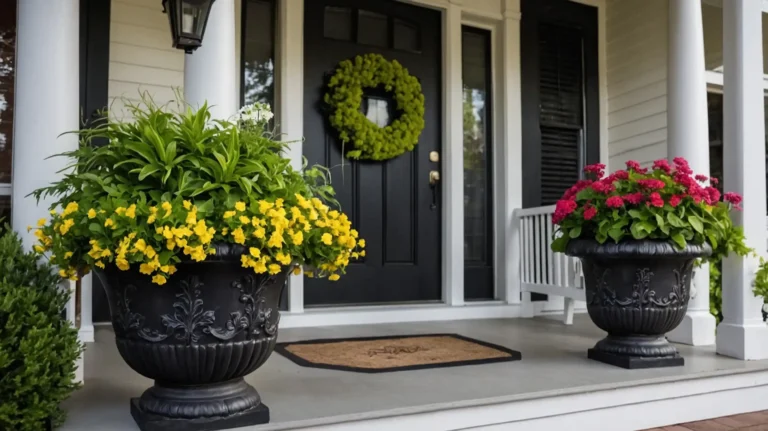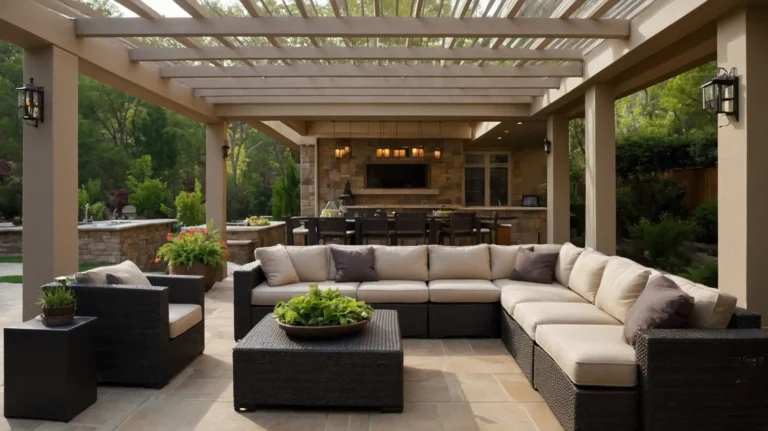27 Productive Homestead Garden Layouts for Self-Sufficient Living
Planning your homestead garden involves more than just picking vegetables you enjoy eating.
A thoughtfully designed layout maximizes your growing space, reduces maintenance, and increases yields—turning your plot into a sustainable food production system rather than just a hobby garden.
The right design works with your specific climate, land features, and available time while addressing your family’s unique food needs.
Smart planning now saves countless hours of work later while significantly boosting your harvest.
Whether you’re working with acres of rural land or a compact suburban lot, these homestead garden layouts will help you create an efficient and beautiful growing space that supports your journey toward greater self-sufficiency.
1: Permaculture Zones System

Arrange your garden in concentric “zones” based on how frequently you need to visit each area, with daily-use herbs and greens closest to your kitchen door and occasional-harvest trees furthest away.
This efficient design minimizes unnecessary walking while ensuring you’ll notice pest problems early in frequently visited areas.
Plant perennial fruits and nuts in transitional zones between annual beds and more distant areas.
You’ll naturally provide better care to plants you see everyday, so position water-sensitive crops near your daily path.
2: Keyhole Garden Beds
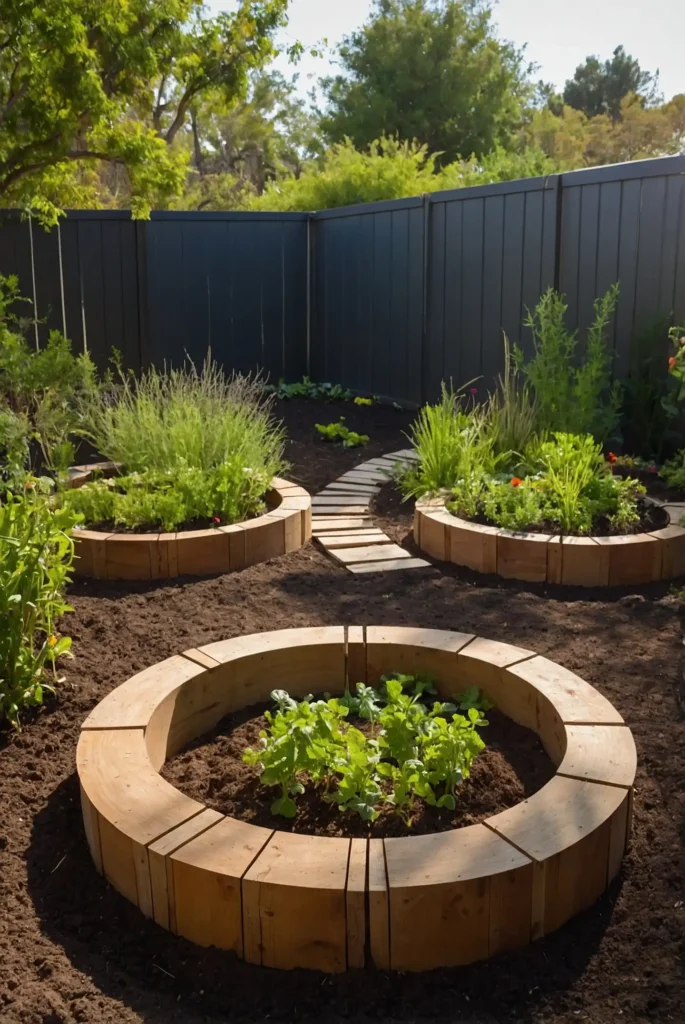
Create circular raised beds with notched “keyhole” walkways that allow you to reach the entire garden while maximizing growing space and minimizing soil compaction.
Place a central compost basket in each keyhole bed to provide continuous nutrients to surrounding plants.
The sloped design directs water toward thirsty central plants while keeping outer edges drier for drought-tolerant species.
This space-efficient pattern increases your growing area by up to 40% compared to traditional row methods.
3: Mandala Garden Design
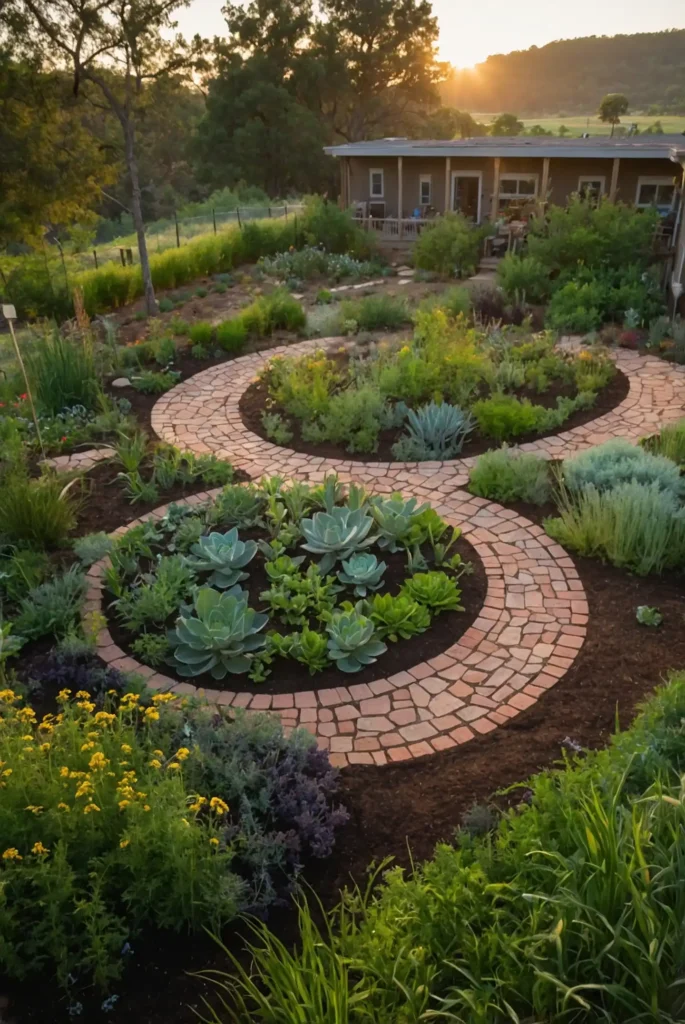
Arrange circular beds in beautiful overlapping patterns that minimize straight lines while creating distinct microclimates and visually striking landscapes.
The circular shape maximizes edge space—where ecological diversity thrives—while distinct sections make crop rotation and succession planting easier to track.
Create small sitting areas at intersections for contemplation and hand-harvesting tasks.
This integrated design mimics natural patterns and creates magical spaces that produce food while nurturing your spirit.
4: Four-Square Rotation System
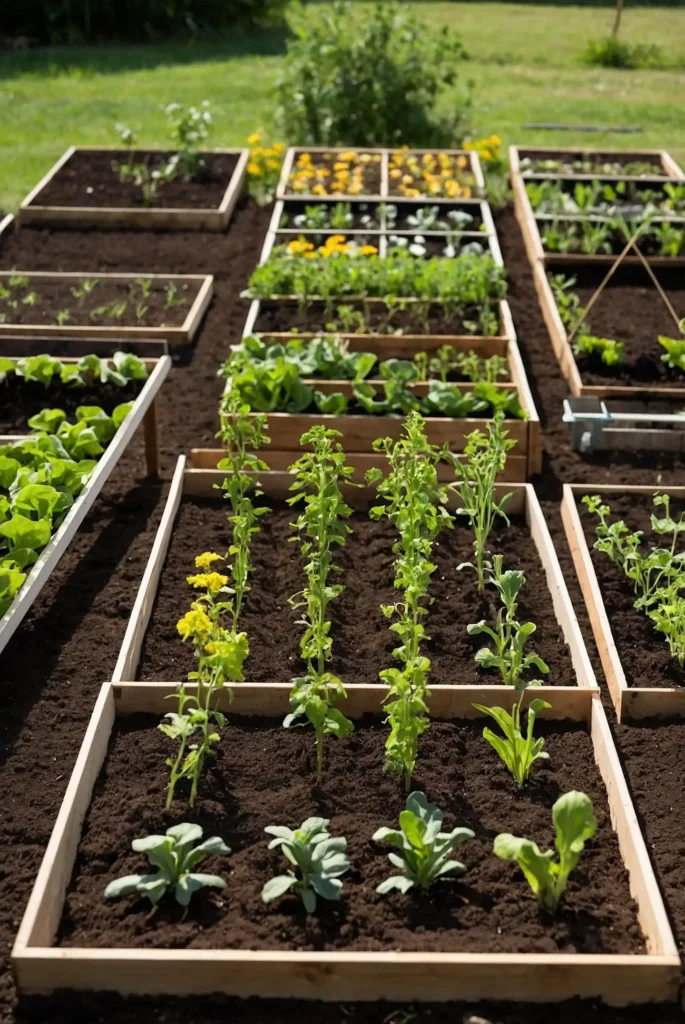
Divide your garden into four equal sections that allow for perfect four-year crop rotations, minimizing soil-borne diseases and optimizing soil fertility naturally.
Dedicate each section to a plant family group: legumes, brassicas, solanaceae, and alliums/roots, then rotate clockwise annually.
Create permanent paths between sections for easy access and clear boundaries.
This organized system simplifies planning while providing the perfect balance between structure and flexibility.
5: Hugelkultur Raised Mounds
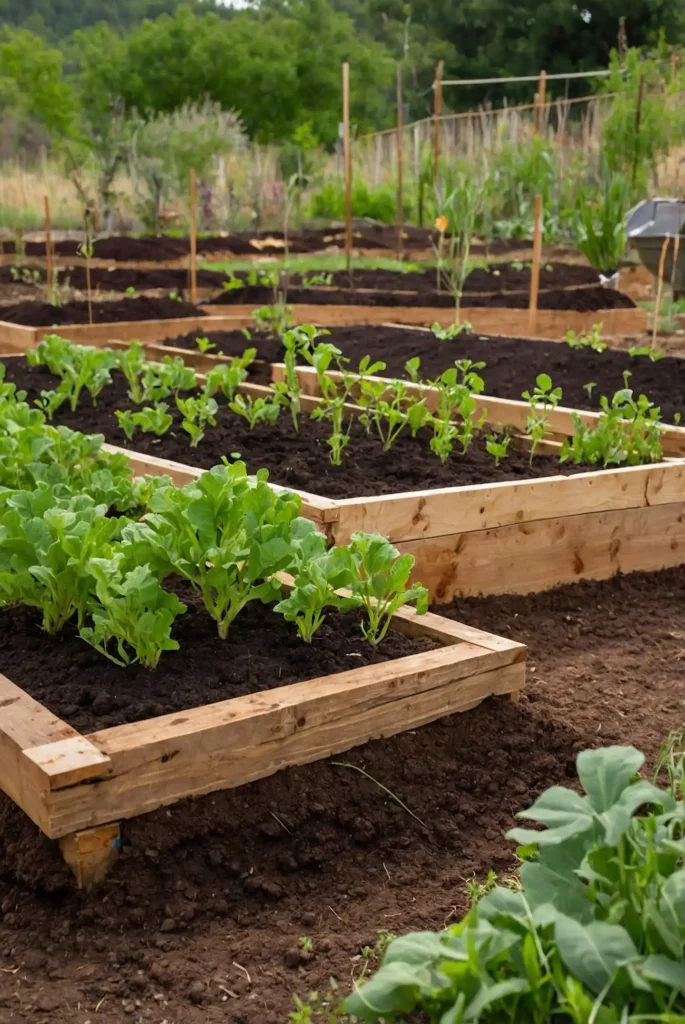
Construct tall growing mounds filled with decaying wood, compost, and soil layers that create self-fertilizing, water-retaining garden beds perfect for sloped properties.
The decomposing wood core absorbs water like a sponge, releasing moisture during dry periods while generating heat that extends your growing season.
Plant water-loving crops at the base and drought-tolerant varieties near the top.
These permaculture marvels improve with age, requiring less irrigation each year as the woody core breaks down.
6: Three Sisters Companion Planting
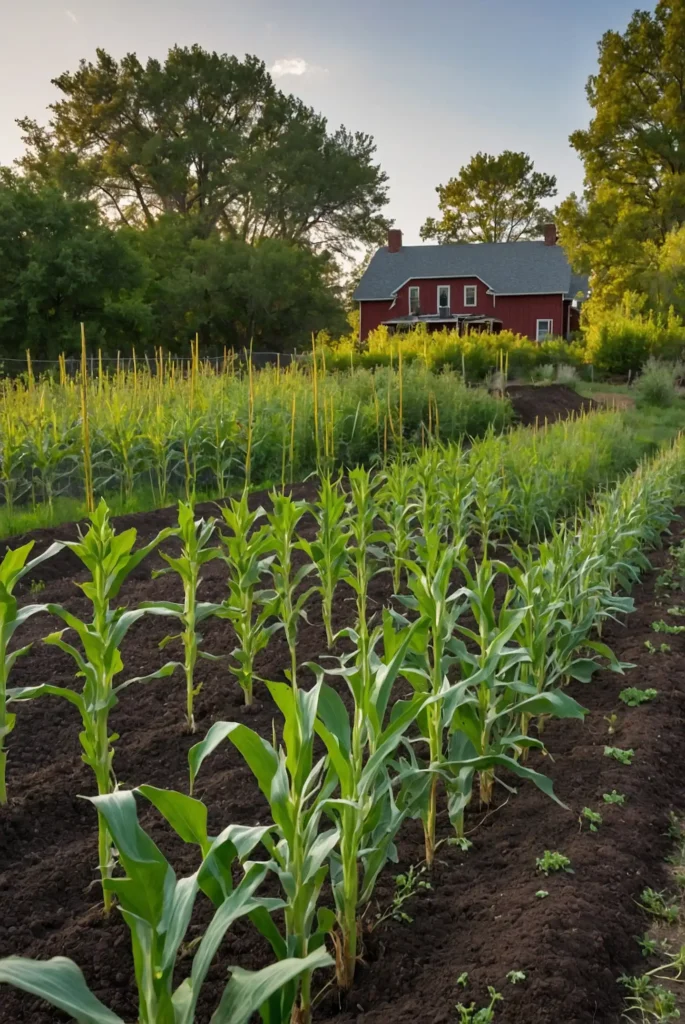
Dedicate sections of your garden to the traditional Native American trio of corn, beans, and squash planted together in mutually beneficial relationships.
Plant corn first, allowing it to reach 6 inches before adding pole beans that will climb the stalks while fixing nitrogen in the soil.
Add squash last, which shades the ground, suppresses weeds, and deters raccoons with prickly vines.
This time-tested polyculture produces more total food with less water than growing these crops separately.
7: Market Garden Rows
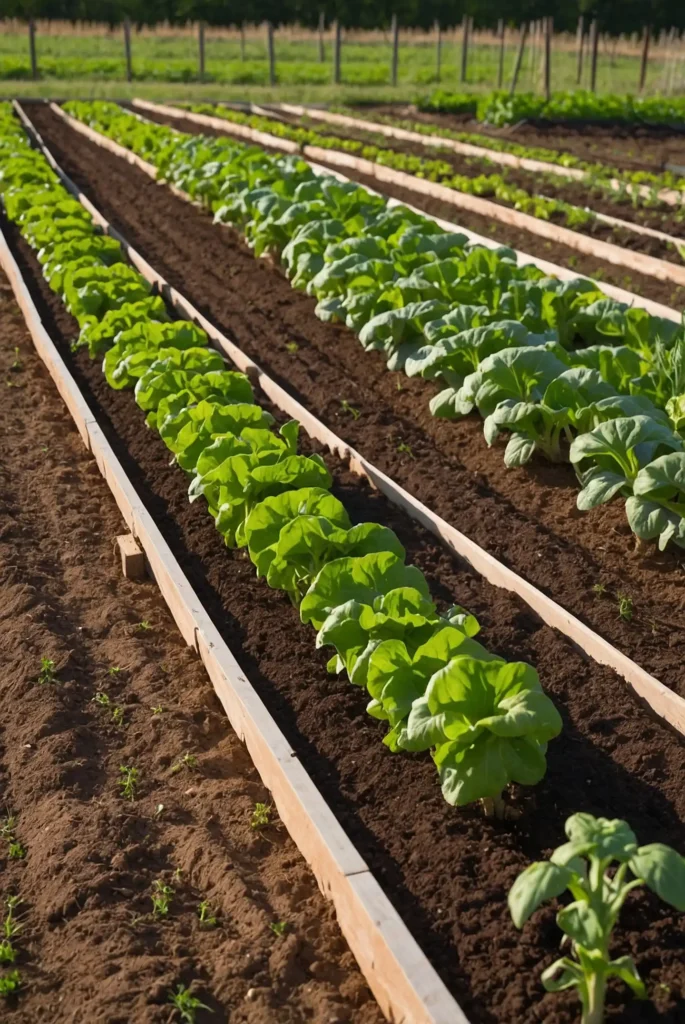
Organize your homestead garden into straight, narrow beds with permanent pathways between them, allowing for efficient succession planting and simplified mechanical cultivation.
Standard 30-inch beds accommodate most wheel hoes and harvesting tools while making irrigation setup straightforward.
Group crops by harvest time and growth habit rather than plant families for maximum efficiency.
This commercial-inspired system works beautifully for larger homesteads focused on high productivity and possible income generation.
8: Cottage Garden Integration
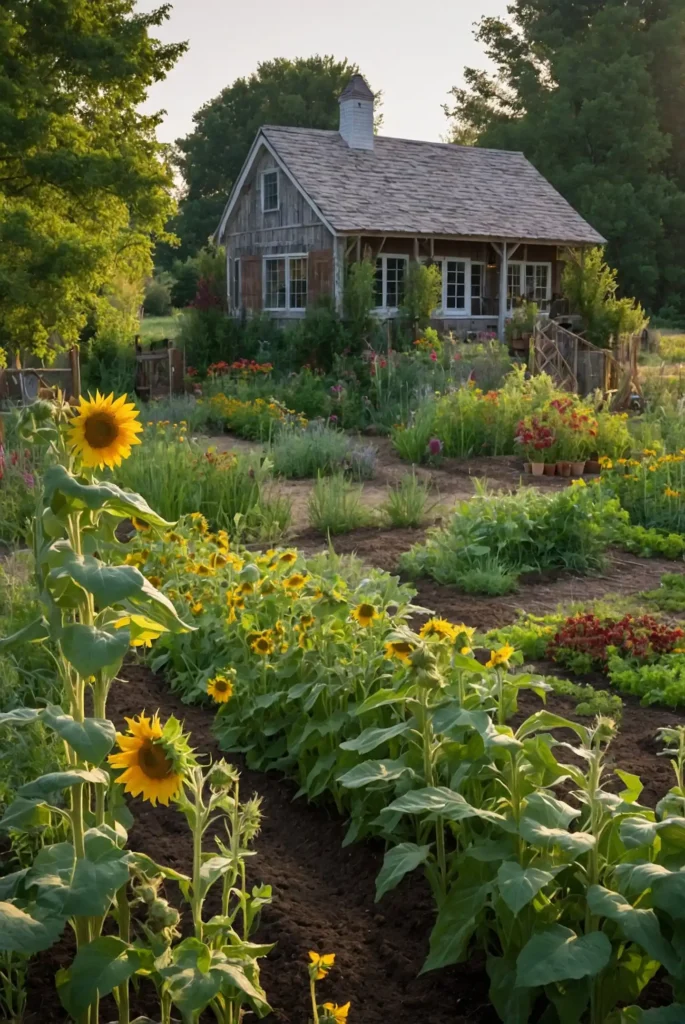
Blend vegetables, herbs, flowers, and fruits in seemingly casual but carefully planned arrangements that boost pollination while creating beautiful, dynamic landscapes.
Plant tall crops like sunflowers and corn on the north side to avoid shading smaller plants.
Weave flowers throughout vegetable sections to attract beneficial insects and confuse pests looking for crop monocultures.
This traditional approach balances beauty with productivity while supporting ecological diversity and resilience.
9: Food Forest Layering
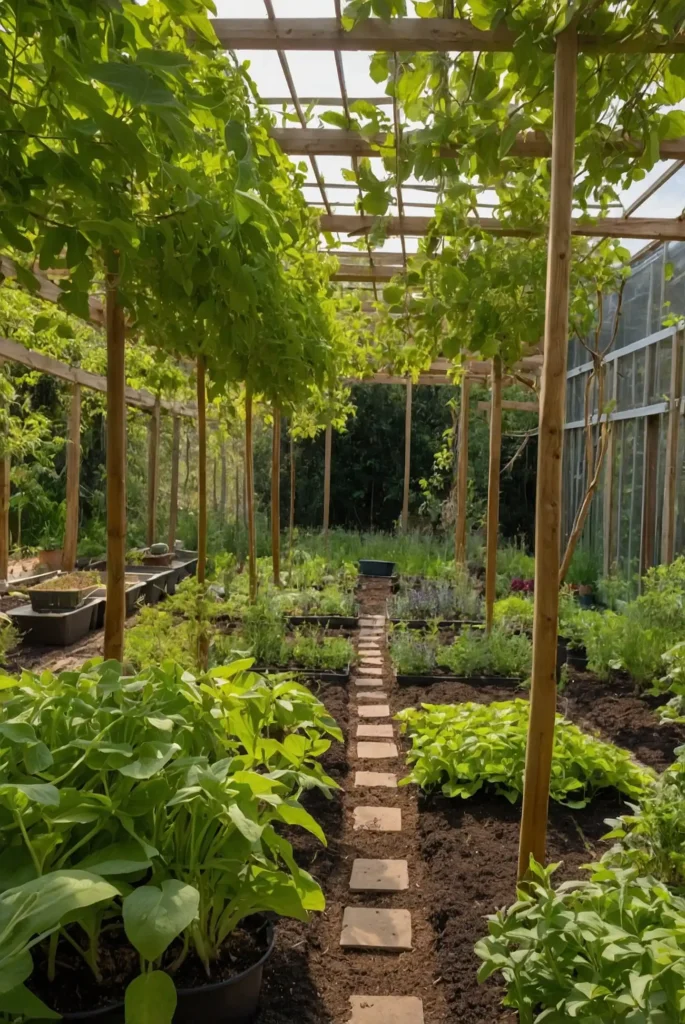
Design a multi-story garden that mimics natural forest structures with tall nut and fruit trees forming the canopy, smaller fruits in the understory, and herbs and vegetables at ground level.
Add nitrogen-fixing support species throughout to improve soil fertility naturally.
Plant sun-loving annuals in clearings and gradually transition to shade-tolerant perennials as trees mature.
This low-maintenance system produces diverse yields year after year with minimal intervention once established.
10: Square Foot Gardening Grid
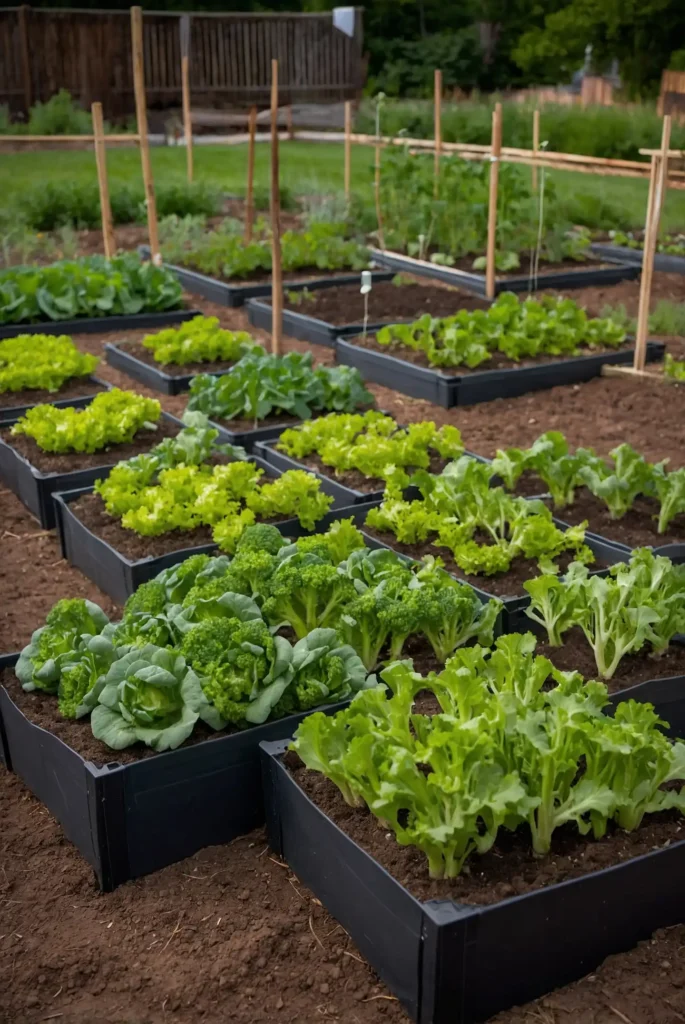
Divide raised beds into 1’x1′ squares to maximize production in limited space while simplifying planning, planting, and rotation schedules for new gardeners.
Use permanent grid markers to visually organize your space, planting each square with the optimal number of a single crop: one broccoli, four lettuce, or sixteen carrots per square.
Rotate crops by square rather than by bed for microscale diversity.
This methodical approach allows you to track successes precisely while optimizing every inch of growing space.
11: Spiral Herb Garden
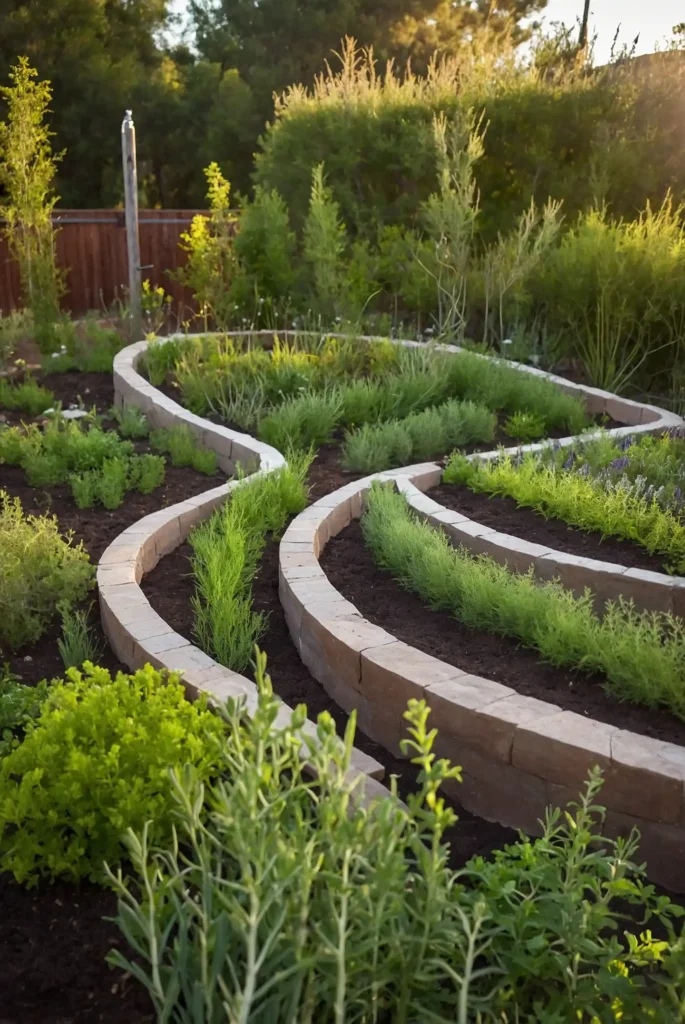
Construct a spiral-shaped raised bed that creates multiple microclimates within a small footprint, accommodating herbs with different sun, drainage, and soil preferences together.
Place moisture-loving varieties like mint and parsley at the base where water collects, with drought-tolerant Mediterranean herbs like rosemary and thyme near the top.
The spiral shape creates both sunny and shaded sides for different light requirements.
This beautiful vertical design brings herbs close to your kitchen while using space incredibly efficiently.
12: Edible Landscape Integration
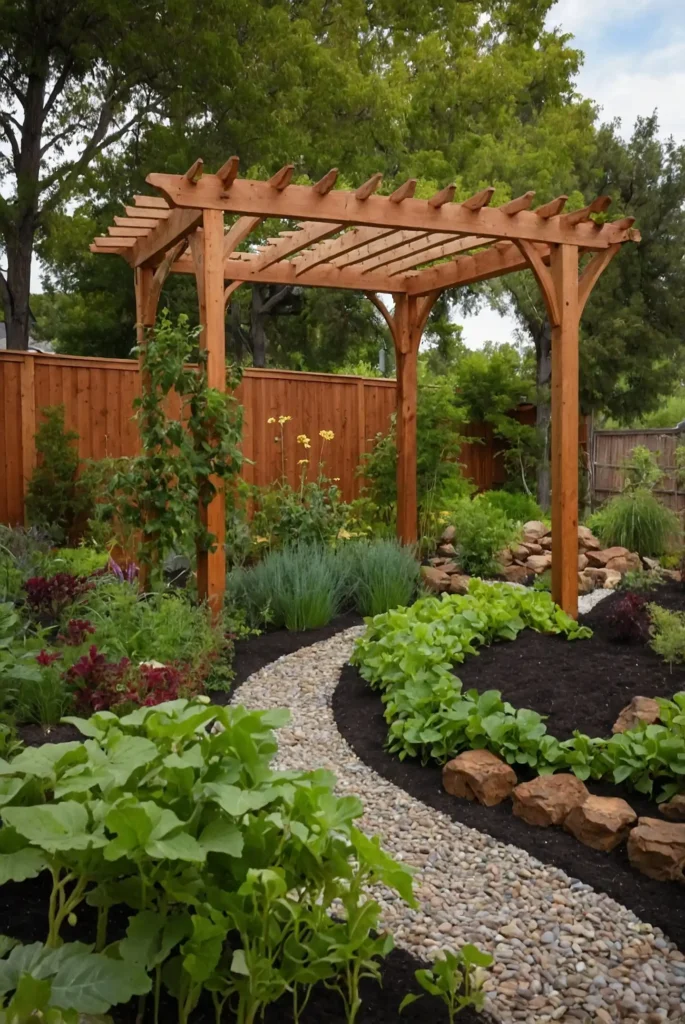
Replace purely ornamental plantings with attractive edibles throughout your homestead, blending food production seamlessly into your existing landscape design.
Substitute fruit trees for shade trees, berry bushes for ornamental shrubs, and edible flowers for purely decorative varieties.
Train vining crops like grapes and kiwis on pergolas and fences for beautiful, productive vertical elements.
This approach maximizes production on limited land while maintaining aesthetic appeal for neighborhood harmony.
13: Chicken-Centered Design
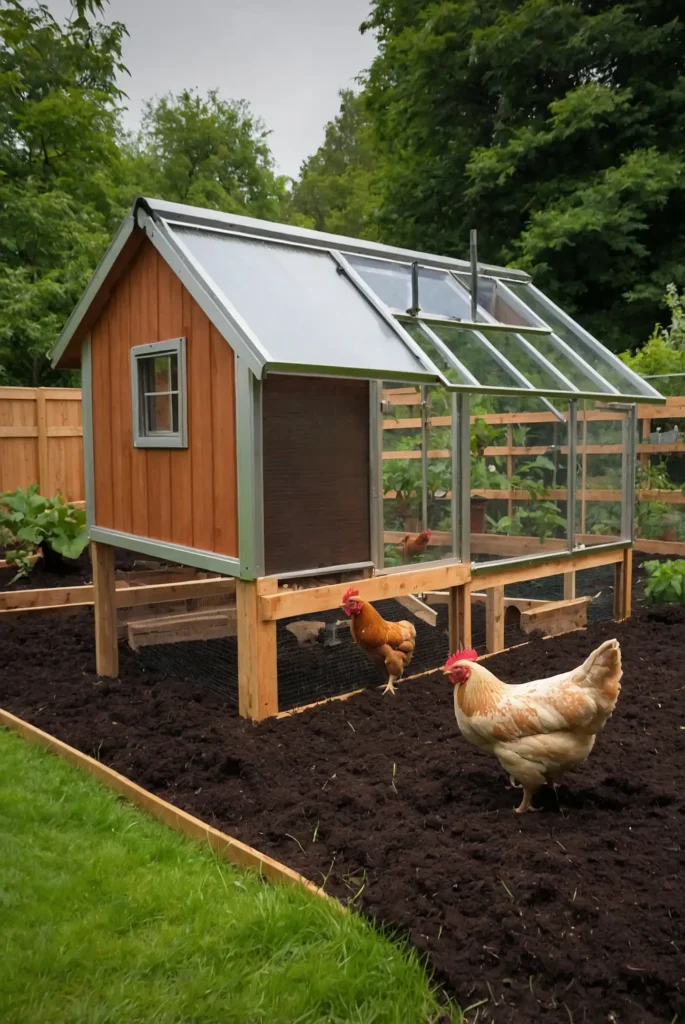
Create a garden layout that positions chickens as central workers by allowing controlled access to specific garden sections seasonally for pest management, soil preparation, and waste recycling.
Design fenced garden rooms that allow you to rotate chickens through harvested areas for cleanup while protecting active growing spaces.
Position the coop centrally with access paths to all garden sections.
This integrated system reduces feed costs while improving soil fertility and reducing pest pressure naturally.
14: Contour Line Planting
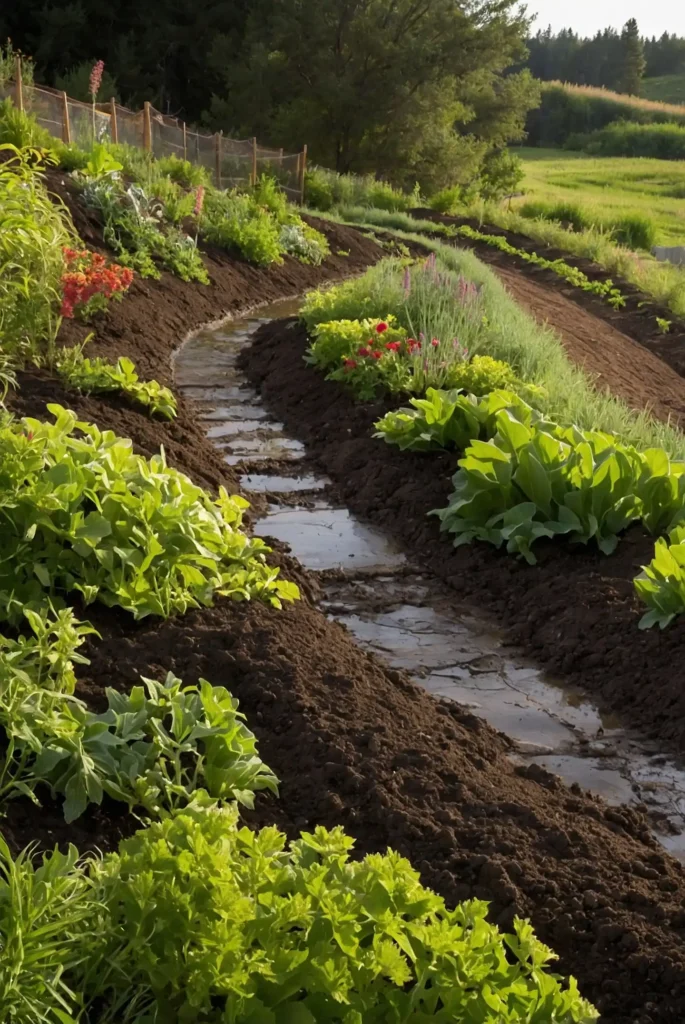
Follow the natural contours of sloped land with swales (level ditches) and raised planting areas that capture water, prevent erosion, and create perfect growing conditions with minimal irrigation.
Dig shallow ditches along contour lines, using excavated soil to build raised planting berms on the downhill side.
Plant trees and perennials along swales where water naturally collects during rain events.
This terrain-adaptive approach turns challenging slopes into productive growing areas while conserving precious water resources.
15: Season Extension Structuring
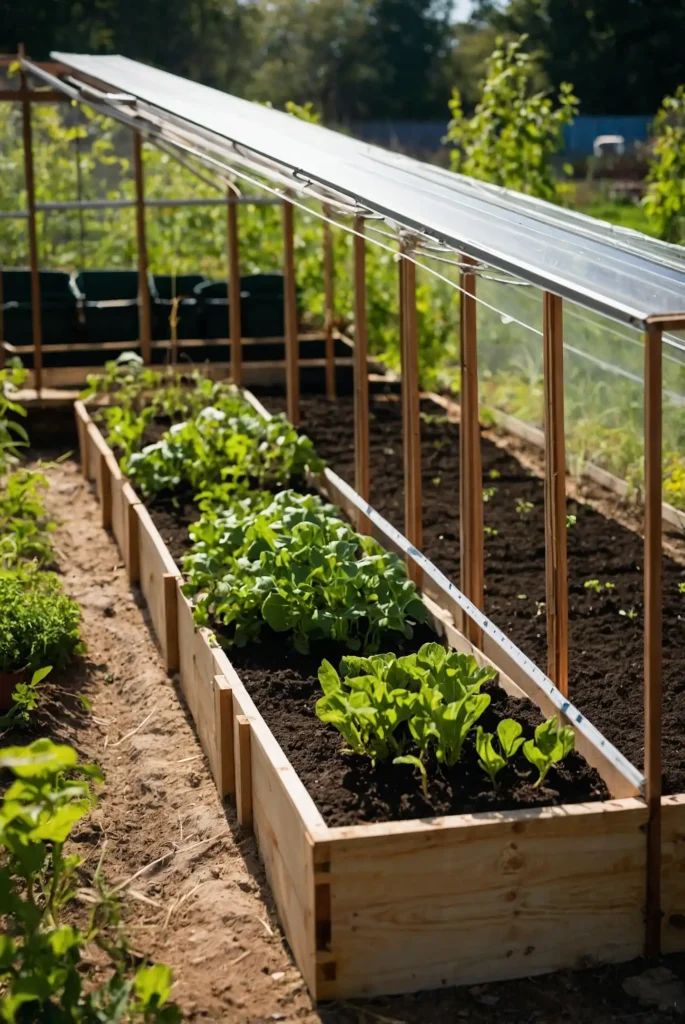
Design your garden with specific areas dedicated to season extension techniques, positioning cold frames, hoop houses, and other protection where they receive maximum winter sun exposure.
Create graduated height plantings that don’t shade winter growing areas during low-angle sun months.
Incorporate thermal mass features like stone walls or water barrels on the north side of protected growing spaces.
This strategic placement extends your growing season by months while ensuring year-round production of fresh food.
16: Intensive Vertical Gardening
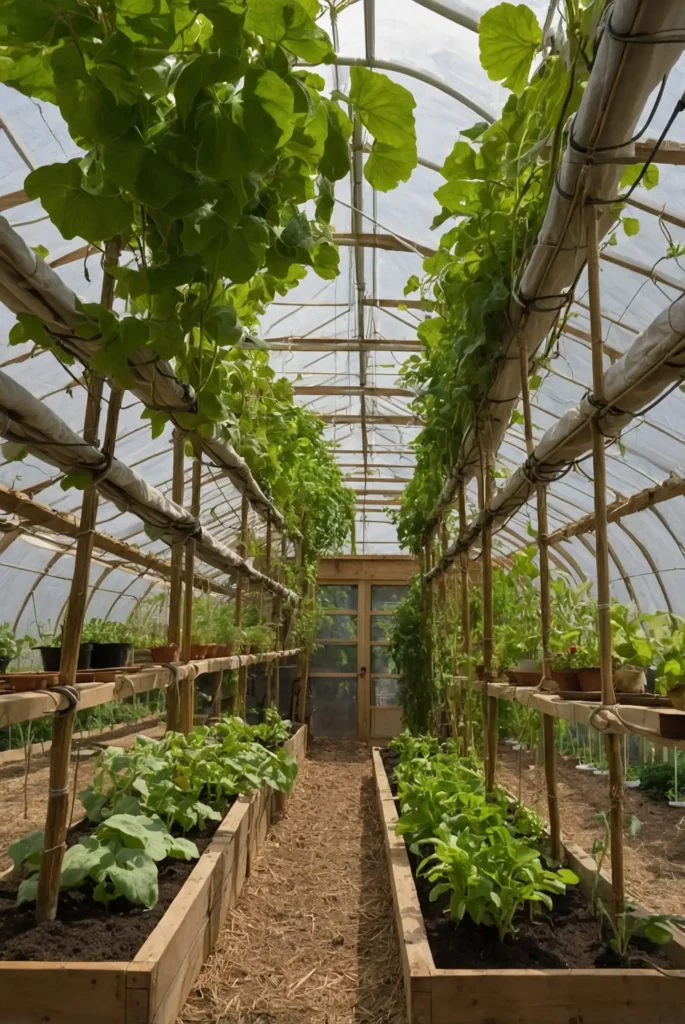
Maximize production in limited space by growing upward with trellises, cages, arbors, and walls that support climbing crops while creating distinct garden rooms.
Position vertical structures to avoid shading other plants while creating beneficial microclimates.
Train heavy-fruiting crops like melons in slings to support developing fruit and prevent breakage.
This space-efficient approach can triple your growing area in small homesteads while adding architectural interest to your landscape.
17: No-Dig Deep Mulch System
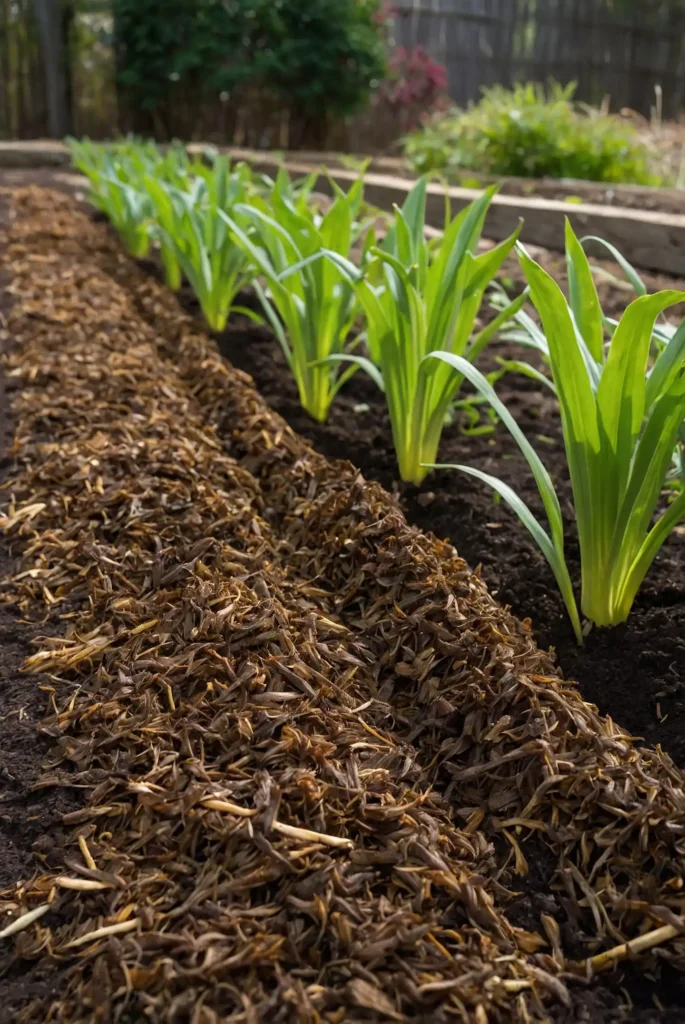
Establish permanent beds covered with thick organic mulch layers that suppress weeds, retain moisture, and gradually build soil fertility without annual tilling or soil disturbance.
Initially break compaction with broadforks, then add 6-8 inches of straw, leaves, or wood chip pathways between 4-foot-wide growing areas.
Plant directly through mulch into soil pockets filled with compost.
This low-effort system mimics natural soil building processes while dramatically reducing watering needs and ongoing labor.
18: Potager Kitchen Garden
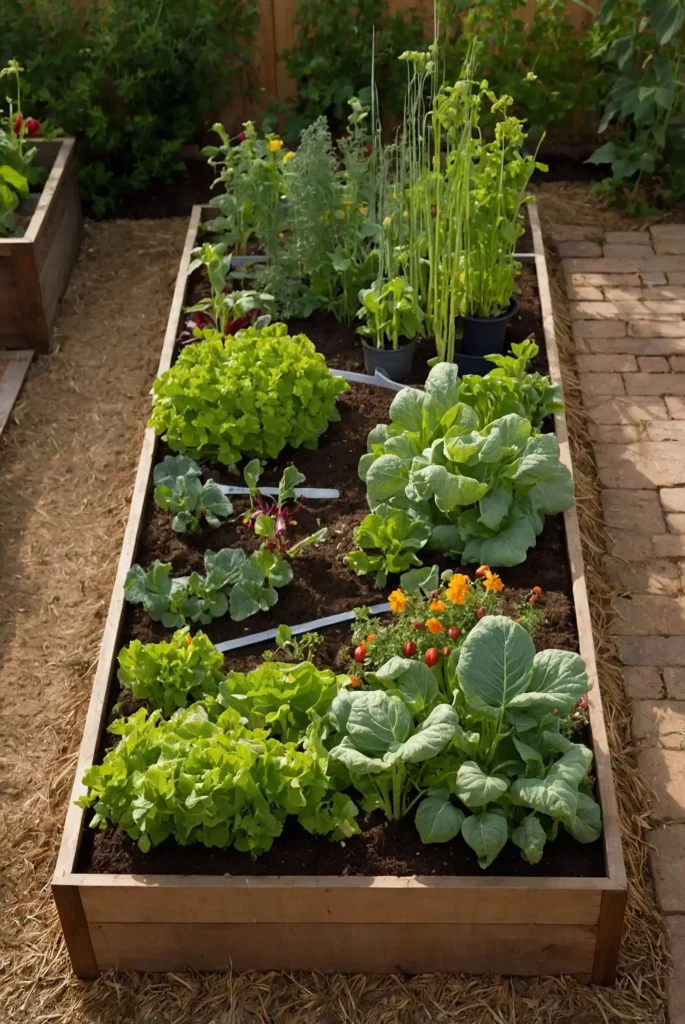
Create a beautiful, practical kitchen garden directly outside your cooking area, combining vegetables, herbs, and edible flowers in an ornamental layout with year-round visual appeal.
Arrange plants in symmetrical patterns with defined borders using materials that complement your home’s architecture.
Incorporate permanent structural elements like dwarf fruit trees or berry bushes at key points.
This traditional European design prioritizes daily harvest convenience while creating a space beautiful enough to showcase to visitors.
19: Beneficial Insect Habitat Borders
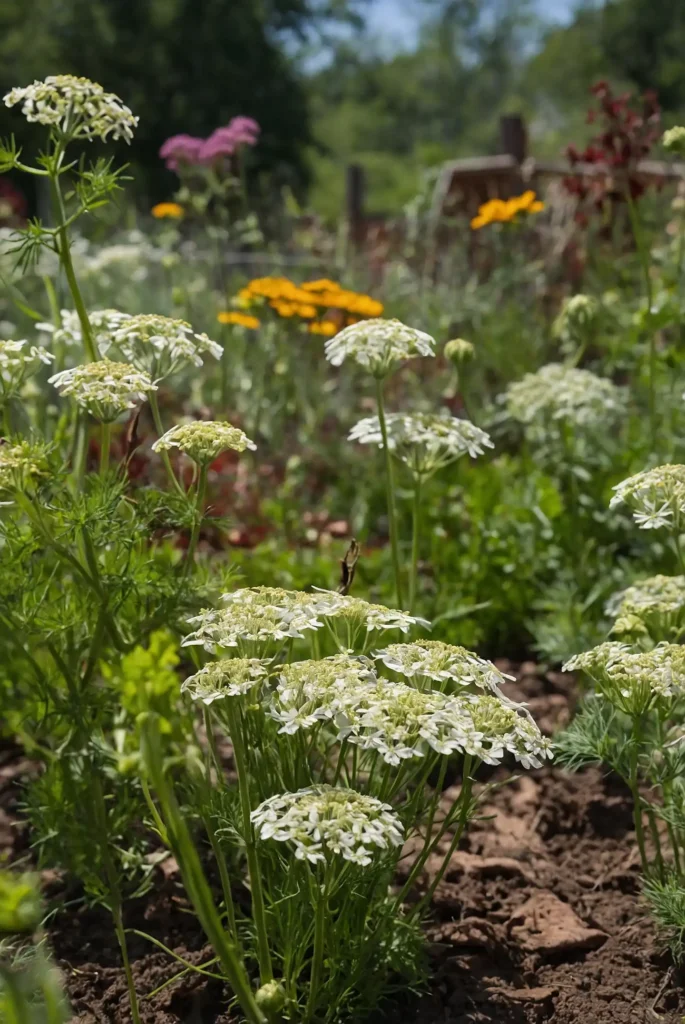
Surround productive growing areas with permanent flowering borders specifically designed to support pollinators and predatory insects that control garden pests naturally.
Include early, mid, and late-season bloomers to provide continuous nectar sources throughout the growing season.
Plant umbel-shaped flowers like dill and Queen Anne’s lace that attract tiny parasitic wasps that combat tomato hornworms and cabbage moths.
This ecological approach reduces or eliminates the need for pest control while improving pollination and overall garden resilience.
20: Perennial Backbone Structure
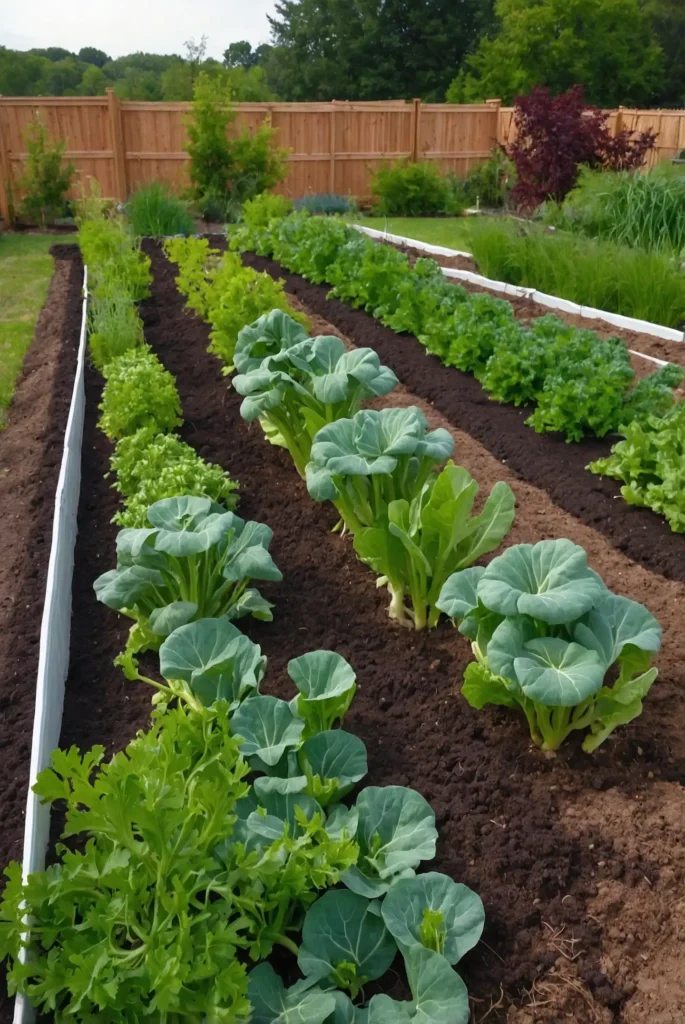
Design your homestead garden with permanent perennial food plants creating the foundational structure, with annual vegetables filling spaces between established trees, shrubs, and herbaceous perennials.
Position fruit and nut trees first, considering their mature size and shade patterns, then add berry bushes, asparagus beds, and perennial vegetables like sorrel and sea kale.
Use remaining sunny patches for annual crops.
This long-term approach builds food security with plants that produce increasing yields year after year with minimal input.
21: Root Cellar Adjacency
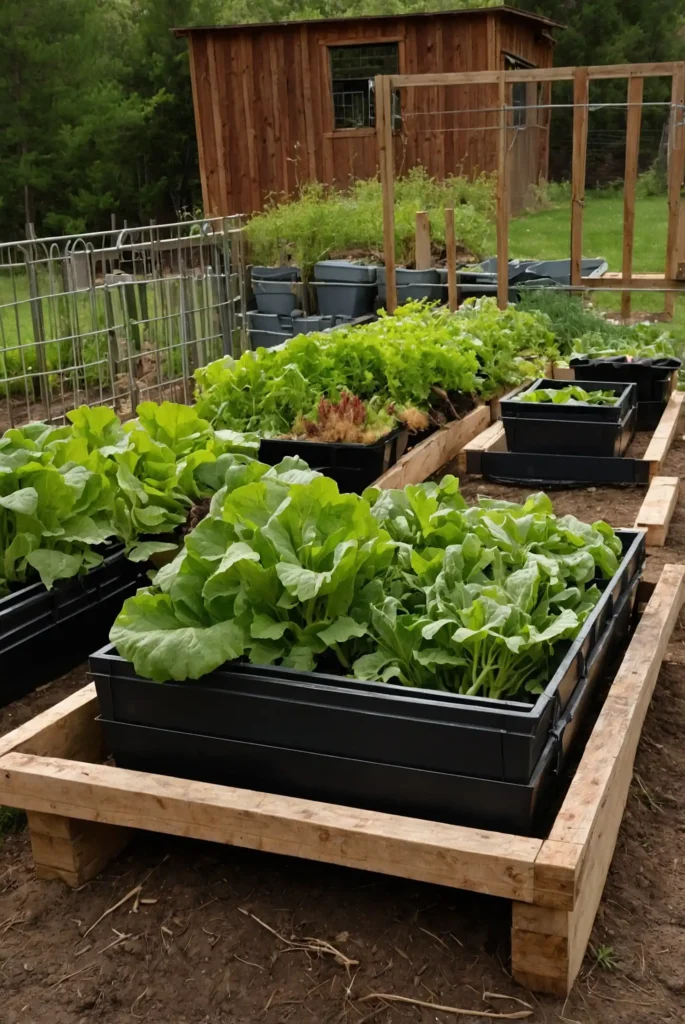
Position cold-storage crops like potatoes, carrots, beets, and winter squash in garden sections closest to your root cellar or food preservation area to minimize carrying distance at harvest time.
Group these storage crops together with similar cultural requirements, separating them from frequently harvested greens and tender vegetables.
Plan wide paths for wheelbarrow access during heavy harvest periods.
This practical arrangement reduces harvest-time labor while ensuring your storage crops receive the proper growing conditions for maximum longevity.
22: Nursery Propagation Station
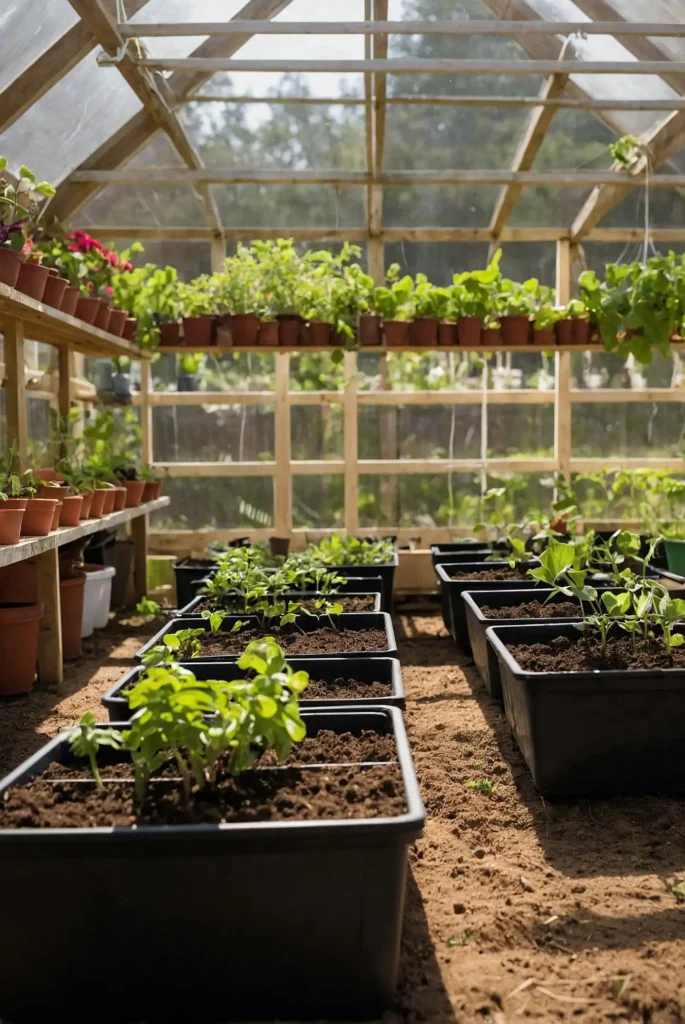
Dedicate a protected garden section to starting seeds, rooting cuttings, and nurturing young plants before transplanting them to permanent positions throughout your homestead.
Choose a location with morning sun, afternoon shade, and protection from strong winds.
Include a potting bench, cold frame, and organized storage for pots and amendments.
This specialized area increases transplant success rates while allowing you to propagate perennial fruits and herbs inexpensively from cuttings and divisions.
23: Multi-Season Harvest Planning
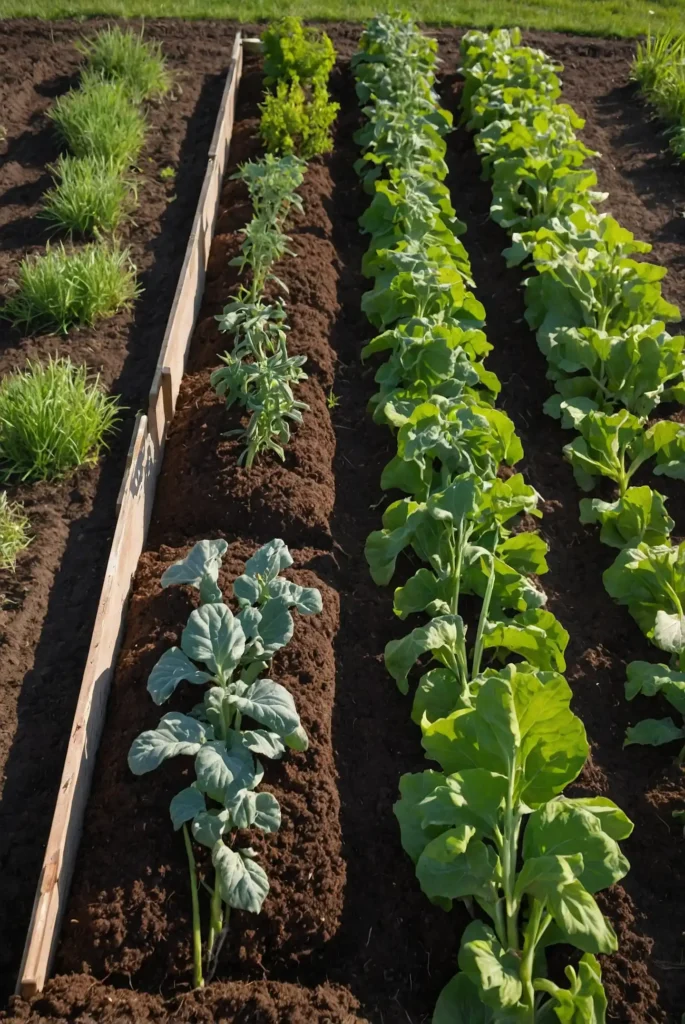
Design your layout specifically to provide harvests across all four seasons, with dedicated sections for early spring, main season, fall, and overwintering crops.
Allocate equal space to each season rather than concentrating on summer crops alone.
Position winter gardens near the house for easy harvesting during inclement weather.
This balanced approach ensures consistent food production throughout the year rather than feast-or-famine cycles.
24: Rainwater Harvesting Integration
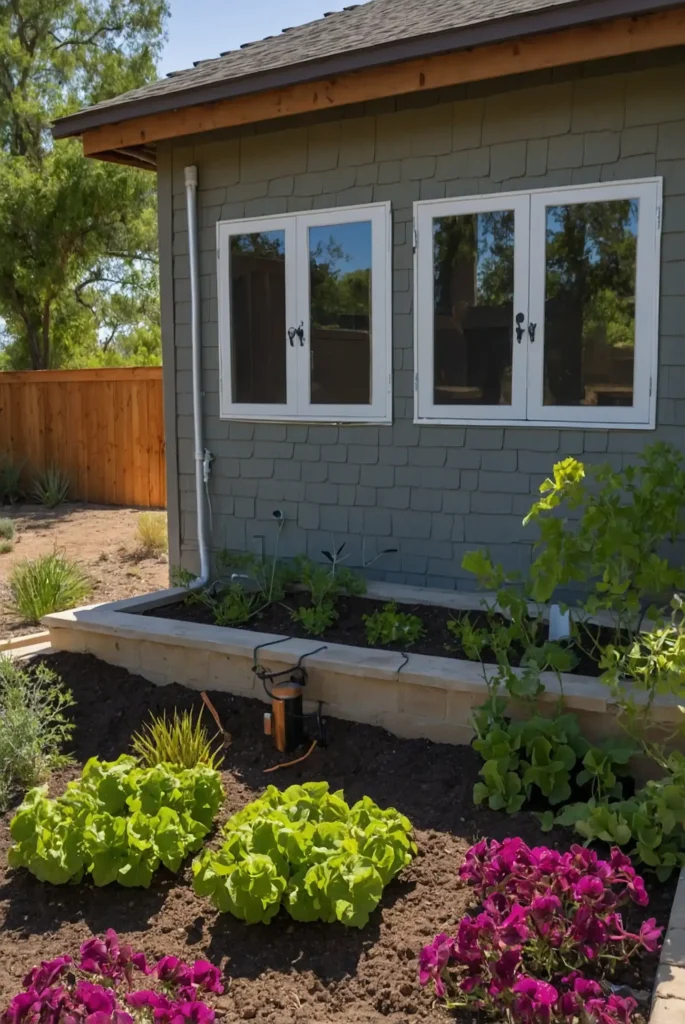
Structure your garden layout around natural and constructed water harvesting systems that capture rainfall from roofs and hard surfaces to reduce or eliminate irrigation needs.
Position water-hungry crops downslope from rain barrels or cisterns for gravity-fed irrigation.
Create shallow depressions called rain gardens to capture runoff from heavy storms.
This water-wise design dramatically increases resilience during drought periods while reducing your environmental footprint.
25: Medicinal Herb Sanctuary
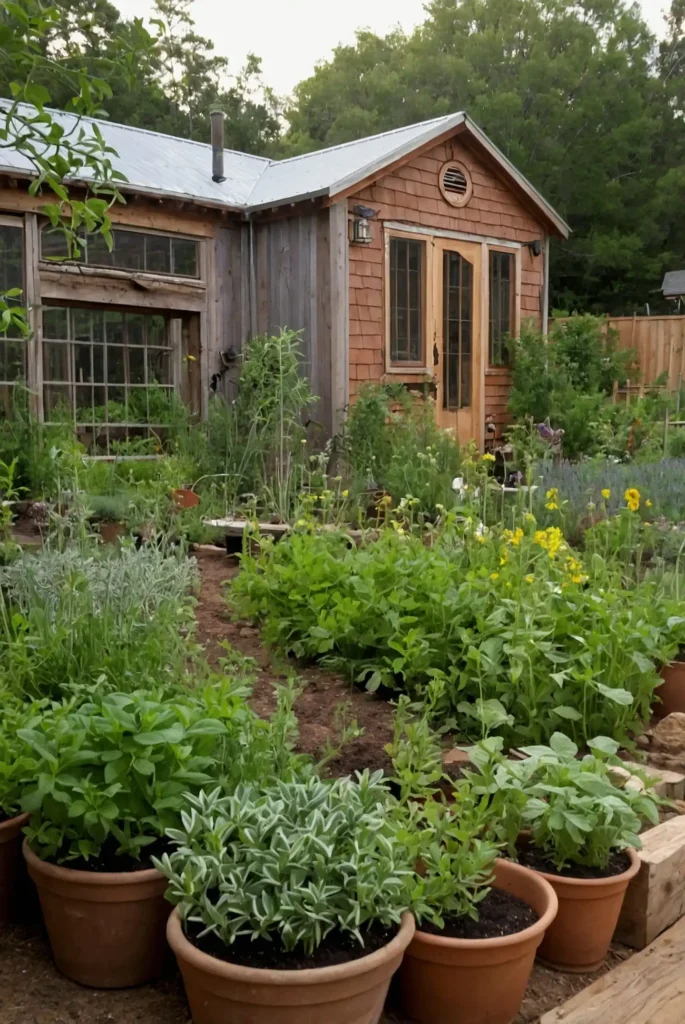
Dedicate a specific garden area to cultivating medicinal plants organized by use, creating your own pharmacy garden that supports health independence alongside food production.
Group plants by therapeutic action—immune supports, digestive aids, respiratory herbs—for easier harvest and processing.
Include signage with plant names and uses for educational purposes.
This intentional space supports your family’s wellness while preserving important traditional knowledge about plant medicine.
26: Wildlife Corridor Inclusion
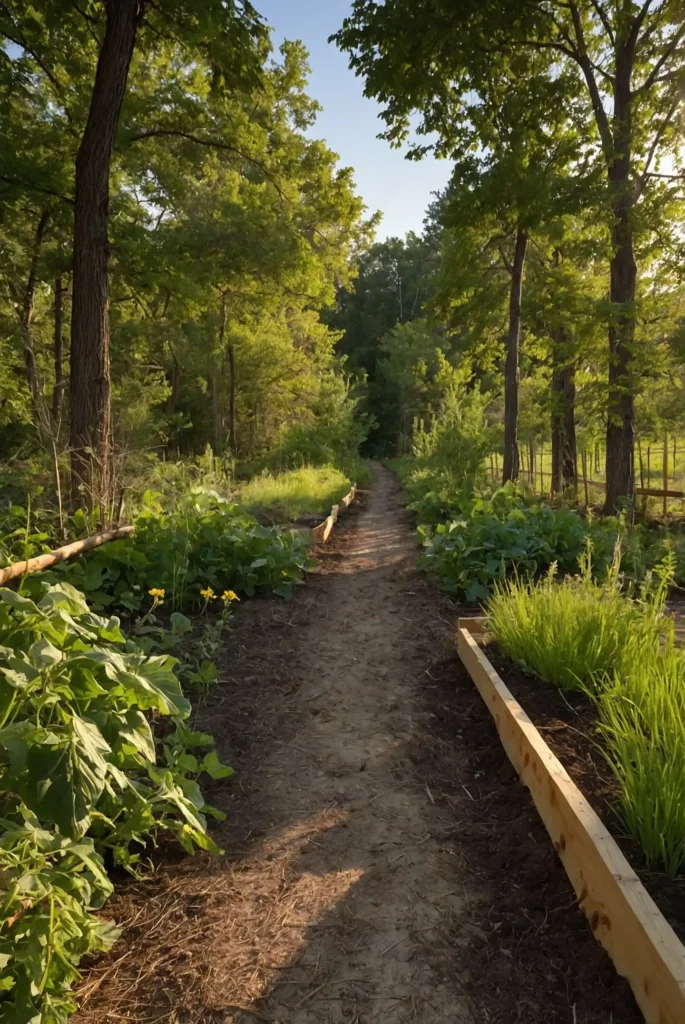
Design deliberate wildlife passages through your productive areas that support beneficial creatures while directing destructive ones away from sensitive crops.
Create hedgerow “highways” connecting wooded areas that provide habitat for insect-eating birds and predators like foxes that control rodent populations.
Include frog ponds and bat houses for natural mosquito control.
This ecological approach recognizes that some wildlife presence actually increases garden productivity through improved pest control and pollination.
27: Microclimate Maximization
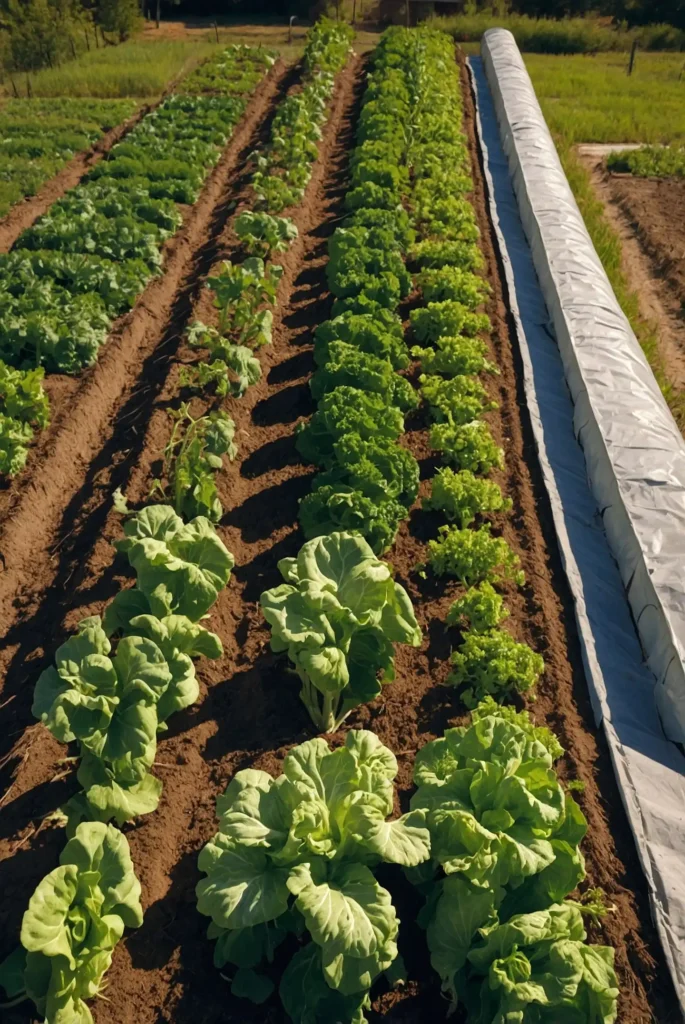
Map your property’s unique microclimates—areas with distinct temperature, wind, and moisture patterns—then match crops to these specific conditions rather than fighting against them.
Use south-facing walls for heat-loving crops like tomatoes and peppers, low-lying frost pockets for late-blooming fruit trees, and windy areas for sturdy brassicas that benefit from air circulation.
This site-specific approach works with your land’s natural features to grow crops that might otherwise struggle in your general climate zone.
Conclusion
Your homestead garden should evolve with your needs, skills, and observations.
Start with designs that match your current reality, implement in manageable phases, and adjust as you learn what truly thrives in your unique growing conditions.

